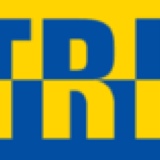Information
-
Document No.
-
Audit Title
-
Client / Site
-
Conducted on
-
Prepared by
-
Location
-
Personnel
Management
-
1. Prepare and send correct OOW prior to vessel arrival.
-
2. Conduct meeting and complete Pre op checklist with C/O.
-
3. Ensure presence during critical stages of operation.
-
4. Correct non compliance and control risks throughout operation.
-
5. Confirm tally correct and report all operational issues.
2. Lashing / Unlashing
-
1. Unlash correct cargo.
-
2. LEave chocks / lashing in place for vehicles on ramps.
-
3. Unlashers avoid touching cargo wherever possible.
-
4. Lashing material kept below bumper height at all times.
-
5. All lashings removed and cleared prior to unparking.
3. Parking / Unparking
-
1. Perform damage and deficiency check.
-
2.Check rear to to ensure all lashings have been cleared.
-
3. Follow correct unparking sequence.
-
4. Never move from stow or reverse without guidance.
-
5. park vehicles in a suitable temporary stow.
4. Driving
-
1. Follow signal to move from temporary stow.
-
2. Reduce speed at bottom of ramp and when passing gas tight doors.
-
3. Always adhere to designated traffic route.
-
4. Slow down and follow directions when entering lay down row.
-
5. Confirm vehicles parked deficiency free.
5. Route marking / Signaliing.
-
1. Mark all Hazards onboard vessel and in yard with traffic cone.
-
2. Provide clear signals for vehicle movements in working hatch.
-
3. Mark no go areas with cones / tape to ensure one safe route.
-
4. Personnel positioned effectively to control traffic and hazards.
-
5. Update route marking prior to changing point of work.
Others.
-
1. Countermeasures from recent incidents implemented fully
-
2. Improved on all points from last self check.
Good points
-
Add media
Points to be improved
-
Add media
Remarks / Comments
-
Add media








